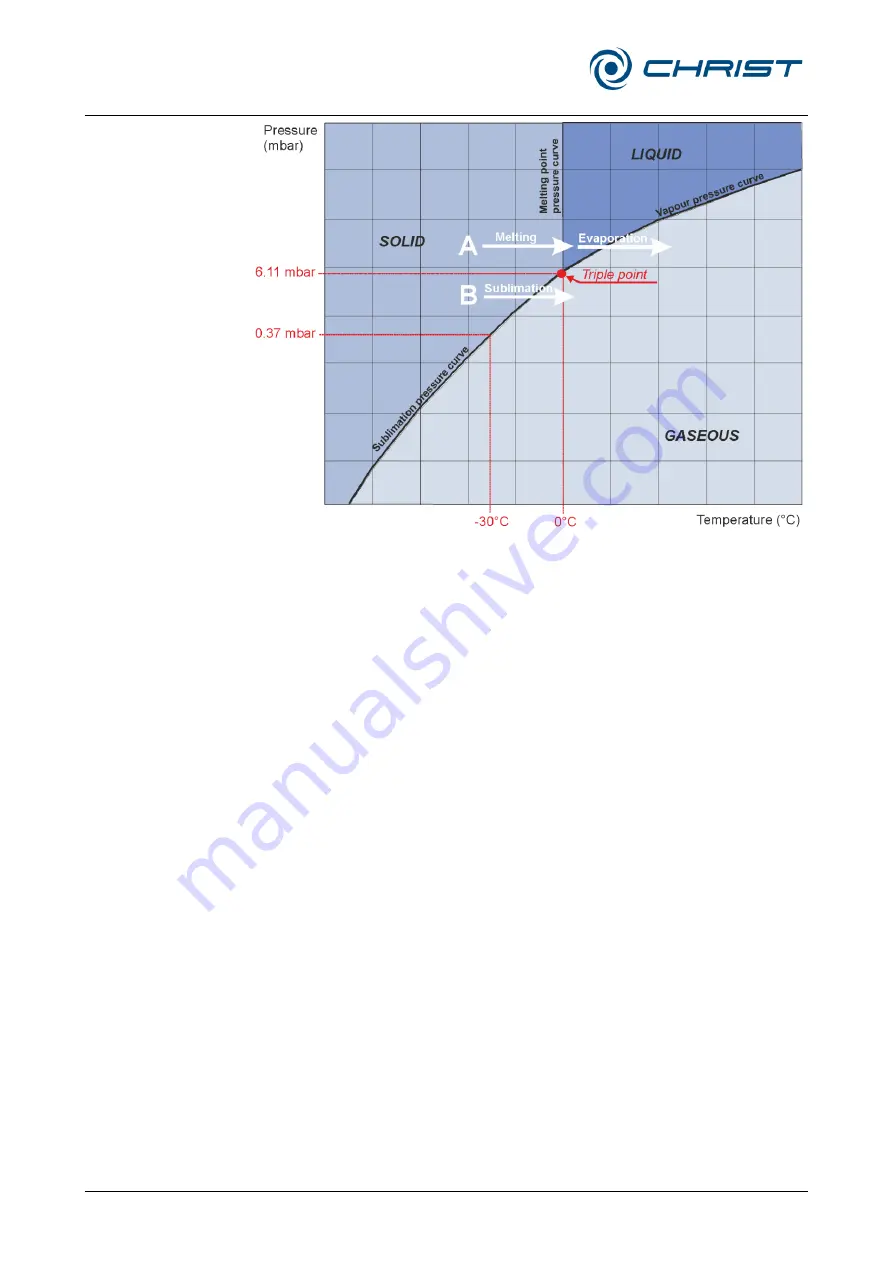
Freeze-dryer Epsilon 2-10D LSCplus
2 Layout and mode of operation
20 / 161
Version 07/2022, Rev. 3.0 of 20/07/2022
• sb
Translation of the original operating manual
Fig. 8: Vapour pressure curve for ice and water
From a physical point of view, the freeze-drying process covers three
phases (see figure below):
(1) Freezing: The product to be dried is frozen under atmospheric pressure.
This can be done either directly in the freeze-dryer or in a separate deep-
freeze. The freezing temperature should be approximately 10°C below the
solidification point of the product.
(2) Evacuation: When the product is sufficiently frozen, the vacuum pump is
activated. The pressure inside the drying chamber will be lowered to the
value that corresponds to the freezing temperature in accordance with the
vapour pressure curve for ice and water.
(3) Sublimation: Thermal energy is added to the product, thus starting the
sublimation process. Due to the added energy, the water in the product is
converted into water vapour. Since the ice condenser is much colder than
the product that is to be dried, the vapour pressure in the ice condenser is
considerably lower than above the product. As a result, the water vapour
that is released by the product streams to the ice condenser, where it
condenses on the condenser coils.
Once the free water has been extracted from the product during the main
drying phase, the last traces of bound water will also be removed at a final
pressure that is as low as possible and at higher temperatures. This takes
place by way of
→
desorption
. This drying phase is also called final drying.
















































